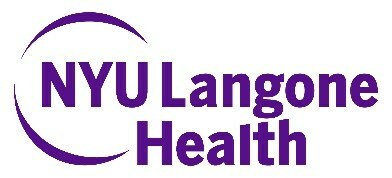Subjects: CHI, SVY, DEI
Emergency Departments Frequently Miss Signs of Epilepsy in Children
NEW YORK, May 1, 2024 /PRNewswire/ -- A subtle type of seizure goes undetected two thirds of the time in pediatric emergency departments, a new study shows.
The work focuses on "nonmotor" seizures, which cause children to "zone out" and stare into space or fidget. They may also feel sudden changes in emotions, thoughts, or sensations, as opposed to motor seizures, which cause muscles to move in abrupt, jerking motions.
According to the authors, improving recognition of nonmotor seizures may speed up the diagnosis and treatment of epilepsy in children, who often struggle to describe their symptoms to physicians or are not asked to do so. Brief nonmotor episodes may happen for years before motor convulsions or other, more severe and obvious symptoms appear.
Led by researchers at NYU Langone Health, the analysis involved 83 preteens and teens in treatment for epilepsy, a chronic neurological disorder in which groups of brain cells send out excessive bursts of electrical signals and trigger seizures. To be diagnosed with the condition, a patient must have experienced a minimum of two seizures with no apparent cause. Because they are easy to overlook or confuse for anxiety and panic attacks, the authors say it is critical that healthcare providers screen for signs of nonmotor seizures.
To better understand how well such nonconvulsive episodes are spotted by physicians and patients alike, the researchers first explored how likely a child was to seek medical attention for their symptoms before they were aware that they had epilepsy. According to the findings, only four children went to the emergency department specifically for symptoms of a nonmotor seizure, although the study team later determined that 44 had a history of such issues. By contrast, 21 children visited the hospital for their first-ever motor seizure, out of 39 total.
Even when treatment was sought, however, it was unlikely that their symptoms were properly diagnosed, the study authors report. Their analysis showed that emergency department physicians correctly identified only 33% of first-time nonmotor seizures, compared with 81% of first-time motor seizures.
"Our findings highlight the need for better recognition of epilepsy in adolescents," said study lead author Nora Jandhyala, BS. "Clearly, there is a large gap in emergency department screening that may be delaying lifesaving treatment," added Jandhyala, a medical student at NYU Grossman School of Medicine.
Notably, the findings further revealed that while almost 40% of the teens turned out to have a history of nonmotor seizures, none were asked about them during their hospital visit. As a result, they were no more likely to be diagnosed and treated for epilepsy than those experiencing a motor seizure for the first time.
A report on the findings is publishing online May 1 in the journal Neurology.
According to the United States Centers for Disease Control and Prevention, epilepsy is one of the most common brain disorders in children, affecting 470,000 under age 17. Untreated seizures can cause permanent brain injury, memory loss, and even death, and delays in diagnosis have been shown to increase risk for these concerns, the authors say. Past research had already revealed that nonmotor seizures are less likely to be noticed by physicians than their more overt counterparts. However, how often this specifically occurs in young people had until now remained unclear.
For the research, the team analyzed medical records of boys and girls between the ages of 12 and 18 who had begun treatment for epilepsy within four months of the study. Fifty-eight had visited either a pediatric or general emergency department prior to their diagnosis. This data was collected as part of the Human Epilepsy Project, a multicenter partnership of 34 hospitals throughout the United States, Europe, and Australia designed to better understand the disorder and improve its treatment.
In the current study, researchers evaluated the children's seizure history, traced their epilepsy diagnosis, and uncovered if or when they were admitted to the hospital and referred to a neurologist.
"Encouraging healthcare workers to routinely ask patients about signs of nonmotor seizures may offer a simple way to spot epilepsy before it worsens," said study senior author and neurologist Jacqueline French, MD.
French, a professor in the Department of Neurology at NYU Grossman School of Medicine, adds that the team is now exploring ways to boost epilepsy recognition among members of the public as well, and hopes that symptoms become common knowledge, similarly to those of heart attack and stroke.
French, who is also a member of NYU Langone's Comprehensive Epilepsy Center, notes that since the study data did not include young children, who may face even greater difficulties in communicating their experiences, nonmotor seizures may be even more common than reported in the current study.
Study funding was provided by NYU Langone.
In addition to Jandhyala and French, other NYU Langone investigators involved in the study are Monica Ferrer, MD, and Hadley Greenwood, BS. Other study authors include Jacob Pellinen, MD, at the University of Colorado in Denver; Dennis Dlugos, MD, at the Children's Hospital of Philadelphia; Kristen Park, MD, at the Children's Hospital of Colorado in Aurora; and Kwee Liu Lin Thio, MD, PhD, at Washington University in St. Louis.
Media Inquiries:
Shira Polan
Phone: 212-404-4279
[email protected]
SOURCE NYU Langone Health
These press releases may also interest you
|
News published on and distributed by:




